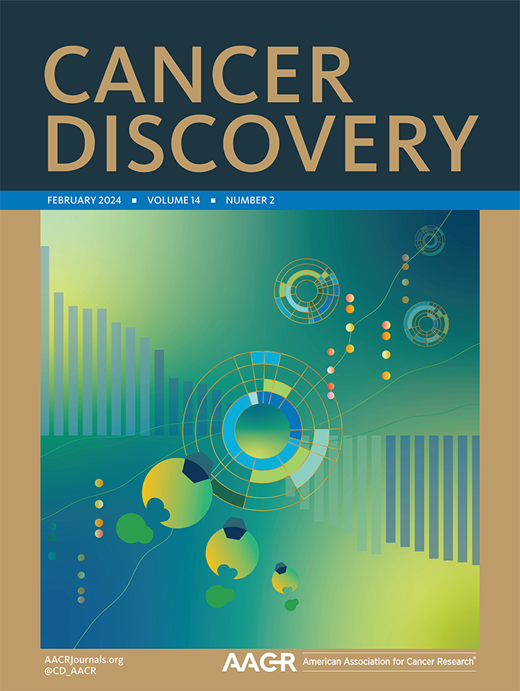交感神经元通过β-2肾上腺素能受体促进小细胞肺癌的发生
IF 29.7
1区 医学
Q1 ONCOLOGY
引用次数: 0
摘要
迷走神经与包括小细胞肺癌(SCLC)在内的多种组织的肿瘤发生有关。然而,交感神经元在小细胞肺癌发生中的作用仍然未知。在这里,我们观察到,在小鼠 SCLC 模型中对局部交感神经进行化学去神经化后,肿瘤生长明显减少。进一步研究发现,癌细胞上的β2肾上腺素能受体(ADRB2)介导了与神经纤维的串扰。基因缺失或药物抑制ADRB2可减少肿瘤生长,提高生存率。此外,阻断 ADRB2 还能减少人 SCLC 器官组织和异种移植物的生长。进一步的研究发现,ADRB2通过激活蛋白激酶A(PKA)信号促进了癌细胞的扩张。同样,抑制 PKA 也会降低 SCLC 细胞的生长。这些发现让人们初步了解了交感神经元在SCLC发展过程中扮演的角色,并可能为治疗这种致命的恶性肿瘤开辟一条新的治疗途径。本文章由计算机程序翻译,如有差异,请以英文原文为准。
Sympathetic Neurons Promote Small Cell Lung Cancer Through the Beta-2 Adrenergic Receptor
The vagal nerve is linked to tumorigenesis in multiple tissues including small cell lung cancer (SCLC). However, the role of sympathetic neuron in SCLC development remains unknown. Here, we observed a significant reduction in tumor growth following chemical denervation of local sympathetic nerves in a mouse model of SCLC. Further study identified that β2-adrenergic receptor (ADRB2) on cancer cells mediated the crosstalk with nerve fibers. Genetic deletion or pharmacological inhibition of ADRB2 led to reduced tumor growth and improved survival. Moreover, blocking ADRB2 also reduced the growth of human SCLC organoids and xenografts. Further studies revealed that ADRB2 promoted cancer cell expansion through activating Protein Kinase A (PKA) signaling. Consistently, inhibition of PKA also reduced the growth of SCLC cells. These findings offer the initial insight into the role played by sympathetic neurons in the development of SCLC and may open a new therapeutic avenue to treat this deadly malignancy.
求助全文
通过发布文献求助,成功后即可免费获取论文全文。
去求助
来源期刊

Cancer discovery
ONCOLOGY-
CiteScore
22.90
自引率
1.40%
发文量
838
审稿时长
6-12 weeks
期刊介绍:
Cancer Discovery publishes high-impact, peer-reviewed articles detailing significant advances in both research and clinical trials. Serving as a premier cancer information resource, the journal also features Review Articles, Perspectives, Commentaries, News stories, and Research Watch summaries to keep readers abreast of the latest findings in the field. Covering a wide range of topics, from laboratory research to clinical trials and epidemiologic studies, Cancer Discovery spans the entire spectrum of cancer research and medicine.
 求助内容:
求助内容: 应助结果提醒方式:
应助结果提醒方式:


